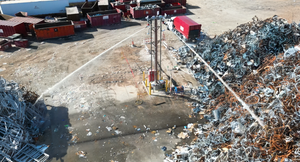Three Steps the Lego Group is Taking Towards Zero Waste
More than likely you’ve built your own cars, weapons and castles with Legos. Maybe you’ve painstakingly pieced together the Star Wars Death Star, assembled Captain Jack’s Black Pearl or fabricated any number of Lego' sets. The Lego Group is known worldwide for its plastic brick toys, but the latest design the company is considering is the bricks themselves a more sustainable product.
Companies around the globe are looking to reduce their footprint and make a profit. The makers of Lego blocks, are no different. In fact, the Lego Group is investing $150 million in research, development and application of new, sustainable, raw materials to manufacture Lego blocks and their packaging materials. The company also has high hopes for reaching its 2030 goals for sustainable products, reducing its carbon footprint and eliminating waste.
1. Alternative Sustainable Materials. This month, Lego Group CFO John Goodwin announced the hiring of the first of an additional 100-plus specialists brought aboard to boost the company’s search for alternative materials for building Lego blocks. This is no easy task, as Lego produces an estimated 19 billion bricks each year and the alternative material would need to be sustainable, while taking on 58 different colors, and fitting together (and holding together) with the strength of the oil-based plastic currently used in producing Legos.
The first hiring came three months after the company said it was establishing the Lego Sustainable Materials Centre, based at its headquarters in Billund, Denmark. The center, which will have satellite locations around the world, will lead the drive toward reaching the Lego Group’s 2030 ambition of finding and implementing sustainable alternatives to all current materials – including the materials presently used to manufacture Lego bricks, which are all petro-chemically based.
“This is a major step for the Lego Group on our way towards achieving our 2030 ambition on sustainable materials,” said CEO and President of the Lego Group, Jorgen Vig Knudstorp.
2. Packaging. The company saves an estimated 6,000 tons of cardboard each year by using smaller, more sustainable boxes. The boxes contain 75 percent recycled content and the smaller size requires less energy to transport to stores, saving as much as 3,000 truckloads annually. The smaller boxes also carry the Forest Stewardship Council (FSC) logo. FSC is an international non-profit certification system that ensures wood and wood-based packaging comes from sustainable sources.
“Reducing our box size makes sense for shoppers, retailers, our business and most importantly the environment,” said Knudstorp.
3. Waste. Lego tradition since the 1950s is well known. Its approach to waste is similarly traditional: reduce, reuse and recycle. The company works to reduce its inputs, reuse materials when possible and recycle paper, cardboard, wood and metal.
In 2013, Lego achieved a 90 percent recycling rate from its production facilities, putting it another step closer to its zero waste goal. In hopes of making improvements, the company says it will continue recycling 100 percent of all element waste, by reducing inputs and reusing and recycling other materials used in the production process.
About the Author
You May Also Like


.png?width=300&auto=webp&quality=80&disable=upscale)